Introduction
In the modern business landscape, a well-structured IT infrastructure forms the backbone of operational success. Integral components such as hardware, software, networks, and data storage solutions must work in tandem to deliver optimal performance and reliability. Leading industry players like Extreme Networks exemplify this by providing innovative solutions to over 50,000 customers globally, ensuring secure device and application connectivity.
This not only enriches customer experiences but also mitigates risks and boosts operational efficiency.
Organizations must regularly assess their IT infrastructure to identify gaps and improvements, as demonstrated by ADRZ, a Dutch regional hospital maintaining a 24/7 operational network for over a decade. The hospital's scalable and reliable core network supports a growing number of users, devices, and applications without downtime. The surge in AI applications, managing trillions of parameters, further highlights the necessity for a scalable and flexible infrastructure.
According to Sameh Boujelbene from Dell'Oro Group, having a fabric that scales to hundreds of thousands of nodes while ensuring the lowest Job Completion Time (JCT) is essential.
Aligning technological capabilities with business needs is crucial for achieving robust operational outcomes. Companies that effectively adapt their technology to meet evolving business requirements experience higher customer satisfaction and accelerated growth. A well-aligned IT infrastructure not only supports current operations but also lays the groundwork for future scalability and innovation.
Understanding Key Components of IT Infrastructure
A robust IT infrastructure is indispensable for businesses striving for operational excellence. Key components include hardware, software, networks, and data storage options, each of which must operate in harmony to ensure optimal performance and reliability. Leading organizations, such as Extreme Networks, leverage innovative solutions to help over 50,000 customers worldwide securely connect devices and applications, thus enriching customer experiences, reducing risk, and improving operating efficiency.
Businesses should conduct comprehensive assessments of their current IT systems to identify gaps and areas needing improvement. This approach is exemplified by ADRZ, a regional hospital in the Netherlands, which has maintained a 24/7 operating network for over eleven years. The hospital's core network exemplifies scalability and reliability, supporting an increasing number of users, devices, and applications without any downtime.
The rapid growth in AI applications, handling trillions of parameters and requiring deployment of thousands of accelerated nodes, underscores the importance of a scalable and flexible infrastructure. According to Sameh Boujelbene, Vice President at Dell'Oro Group, the need for a suitable fabric that can scale to hundreds of thousands of nodes while ensuring the lowest Job Completion Time (JCT) is paramount.
In essence, aligning organizational needs with technological capabilities fosters strong operational outcomes. Firms that adeptly adapt their technology capabilities to meet changing business needs experience higher customer satisfaction and faster growth. A well-aligned IT framework not only supports current operations but also paves the way for future scalability and innovation.
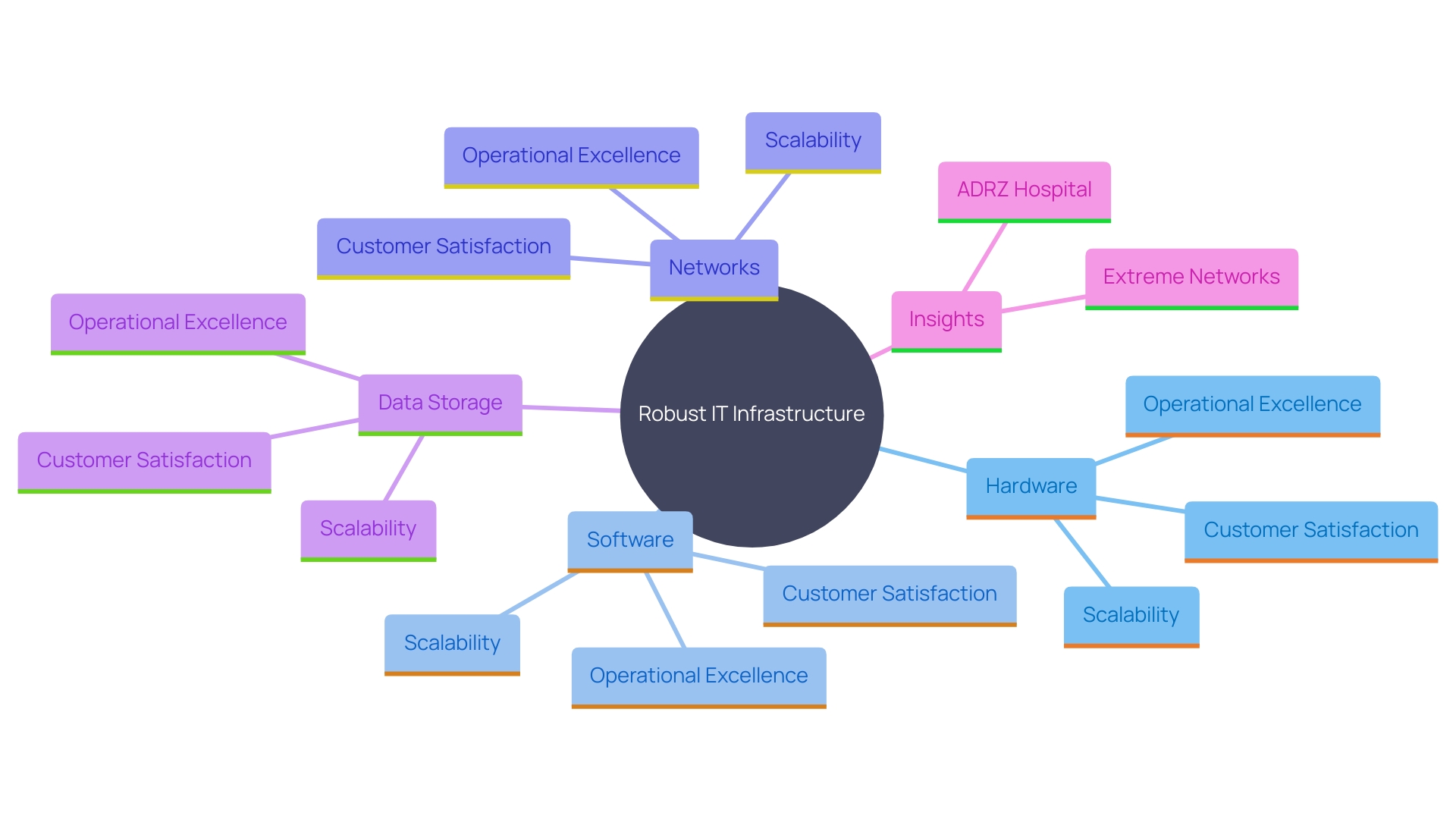
Proactive Monitoring and Maintenance
Implementing proactive monitoring tools is crucial for effective IT infrastructure management. Continuous monitoring tools, designed to manage and interpret information from various sources, enable organizations to detect issues before they escalate into significant problems. These tools collect, process, store, and present information from logs, metrics, traces, and events, offering valuable insights and actionable recommendations. The organized data is stored securely, allowing for easy retrieval and analysis whenever needed.
By shifting from traditional security measures like periodic audits and manual assessments to continuous monitoring, companies can achieve real-time insights into potential issues. This proactive approach minimizes downtime and enhances overall system performance, ensuring smoother business operations. For example, monitoring for unusual latency in a complex network environment can help identify issues with network equipment or congestion points before they impact users.
Moreover, continuous monitoring adapts to modern needs, whether for compliance checks, continuous control, infrastructure monitoring, or defending against cyber threats. Establishing regular maintenance schedules ensures all components function correctly, further supporting operational continuity, security, and efficiency.
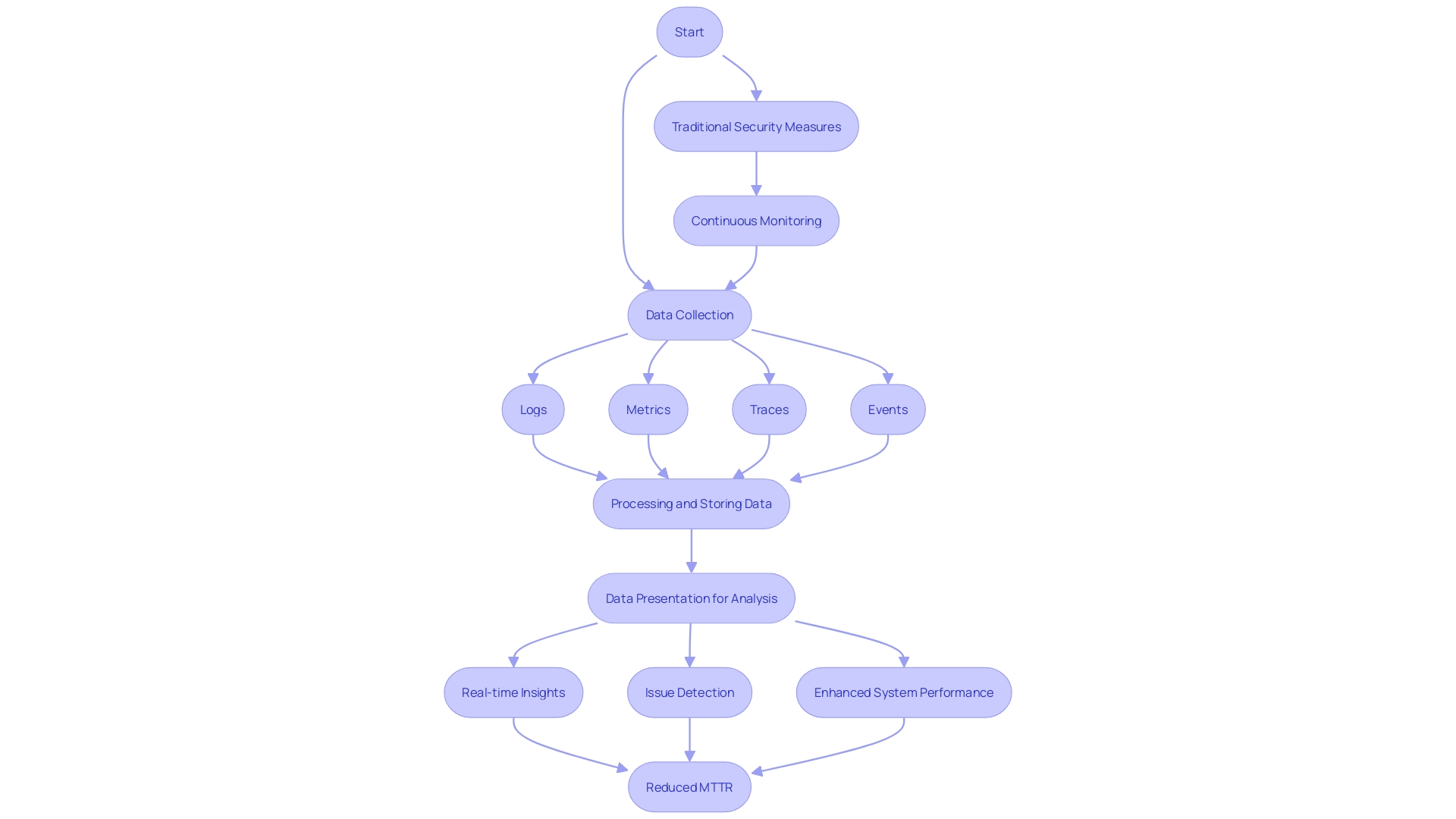
Cybersecurity and Patch Management
As the threat landscape continues to evolve, prioritizing cybersecurity has never been more critical. Organizations must adopt a comprehensive security strategy informed by thorough risk assessments, which identify key objectives, activities, performance measures, and required resources. Regular patch management is essential to protect against vulnerabilities, while implementing firewalls and intrusion detection systems further fortifies defenses.
Employee training is a cornerstone of an effective cybersecurity strategy, ensuring staff are well-versed in recognizing and responding to potential threats. According to the Institute of Electrical and Electronics Engineers (IEEE), developing a robust incident response plan is crucial. This plan should be regularly tested and updated through simulated exercises to ensure its effectiveness in mitigating the impact of security breaches.
The significance of a holistic cybersecurity strategy is emphasized by the Guthrie Clinic's all-encompassing IT offerings for healthcare, which cater to not only technological but also physical, emotional, and social needs. This multifaceted approach highlights the necessity of integrating various defense mechanisms to achieve a resilient cybersecurity posture.
Furthermore, Gartner emphasizes that effective cybersecurity risk management enables organizations to confidently leverage emerging solutions and third-party vendors without compromising their security. By incorporating these best practices, businesses can protect themselves against the ever-growing spectrum of cyber threats.
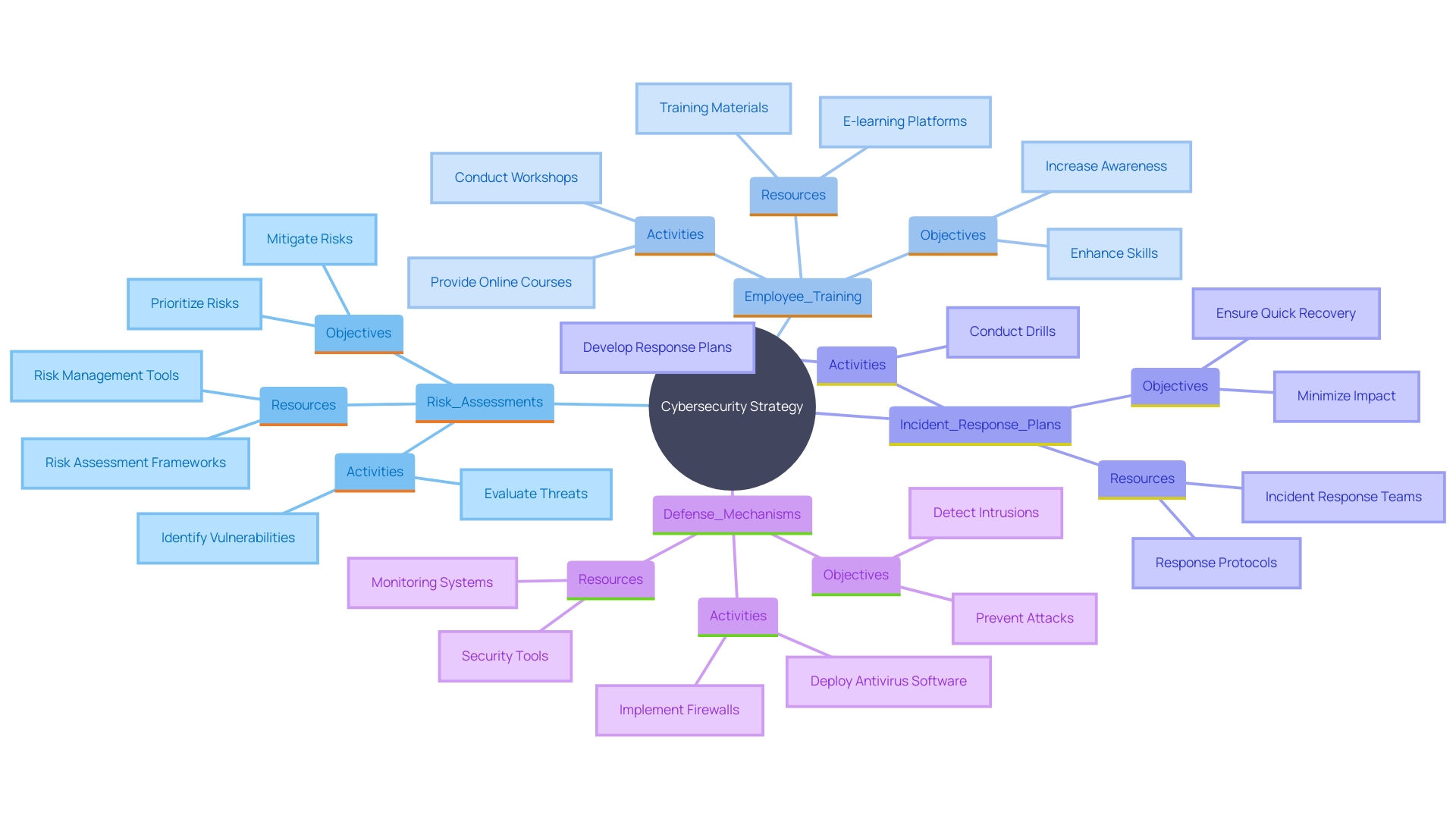
Regular Backups and Disaster Recovery Planning
Creating a strong backup plan is a cornerstone of effective information protection. Automated backup systems are vital for maintaining the integrity and accessibility of business-critical information. These methods produce secure duplicates of information, enabling recovery to a known good condition in the event of information loss or system malfunction. Implementing a comprehensive disaster recovery plan is equally crucial. This plan should outline the procedures for information restoration and system recovery, ensuring minimal disruption to business operations. Regular testing of these plans is imperative to validate their effectiveness and readiness during actual incidents. Effective data protection relies on having both a reliable backup solution and a well-defined recovery strategy, ensuring swift and accurate restoration.
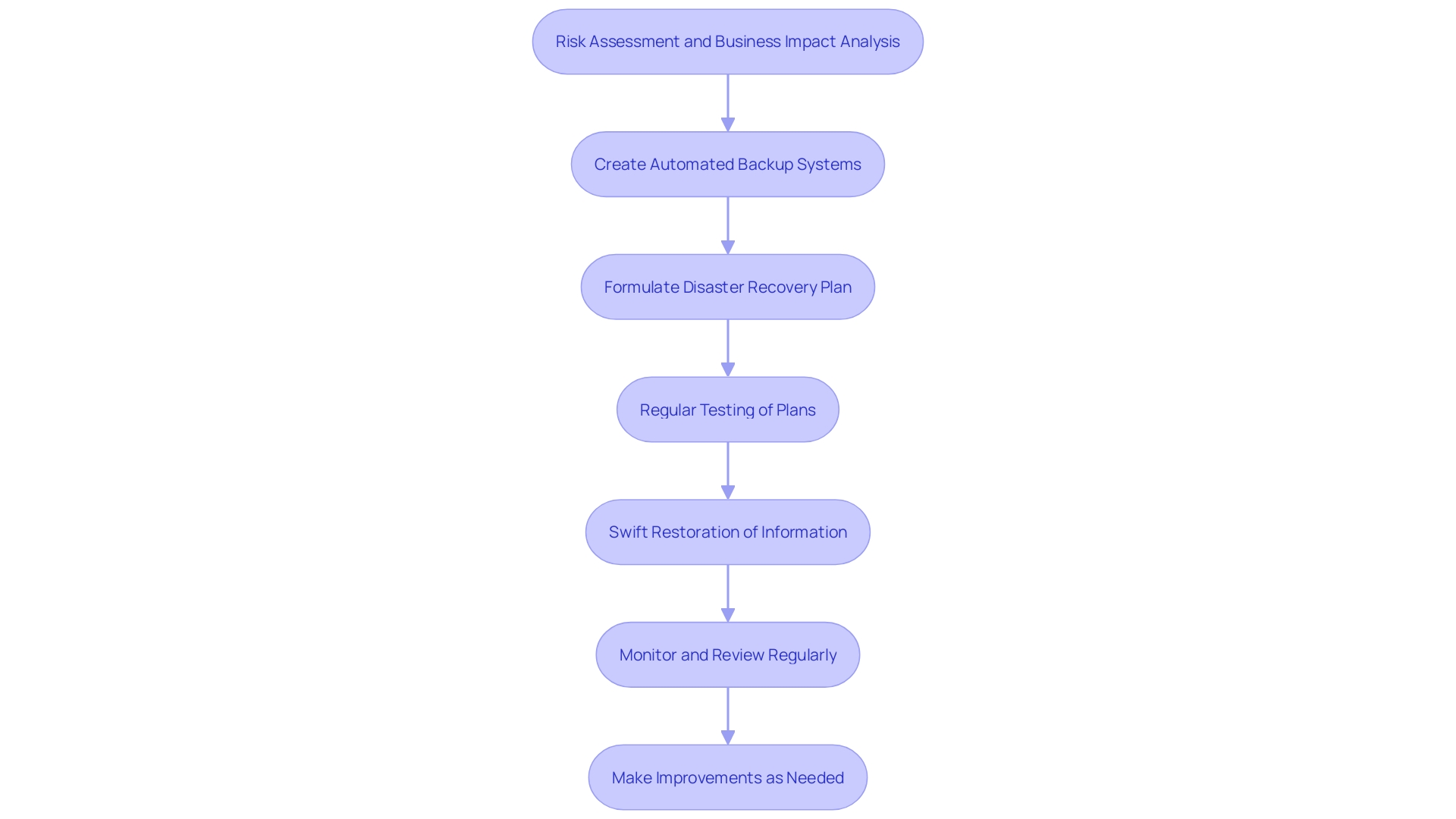
Cost Reduction and Resource Optimization
Enhancing resource distribution is crucial for efficient IT system management, significantly lowering expenses. Virtualization emerges as a key strategy, enhancing the utilization of physical resources. For instance, during the global pandemic, many companies swiftly deployed virtual desktop infrastructure (VDI) on public clouds, offering device-agnostic access and maintaining consistent VDI broker software like Citrix or VMware. This not only ensured secure and efficient remote work but also maximized resource use.
Consistently reviewing technology investments is crucial, aligning them with organizational objectives to remove unnecessary costs. According to Uptime Intelligence, the global spending on tech goods and services by businesses and governments has become a trillion-dollar industry, underscoring the importance of strategic investments. By concentrating on scalable and efficient system solutions, organizations can enhance overall efficiency and remain competitive in a rapidly evolving technological landscape.
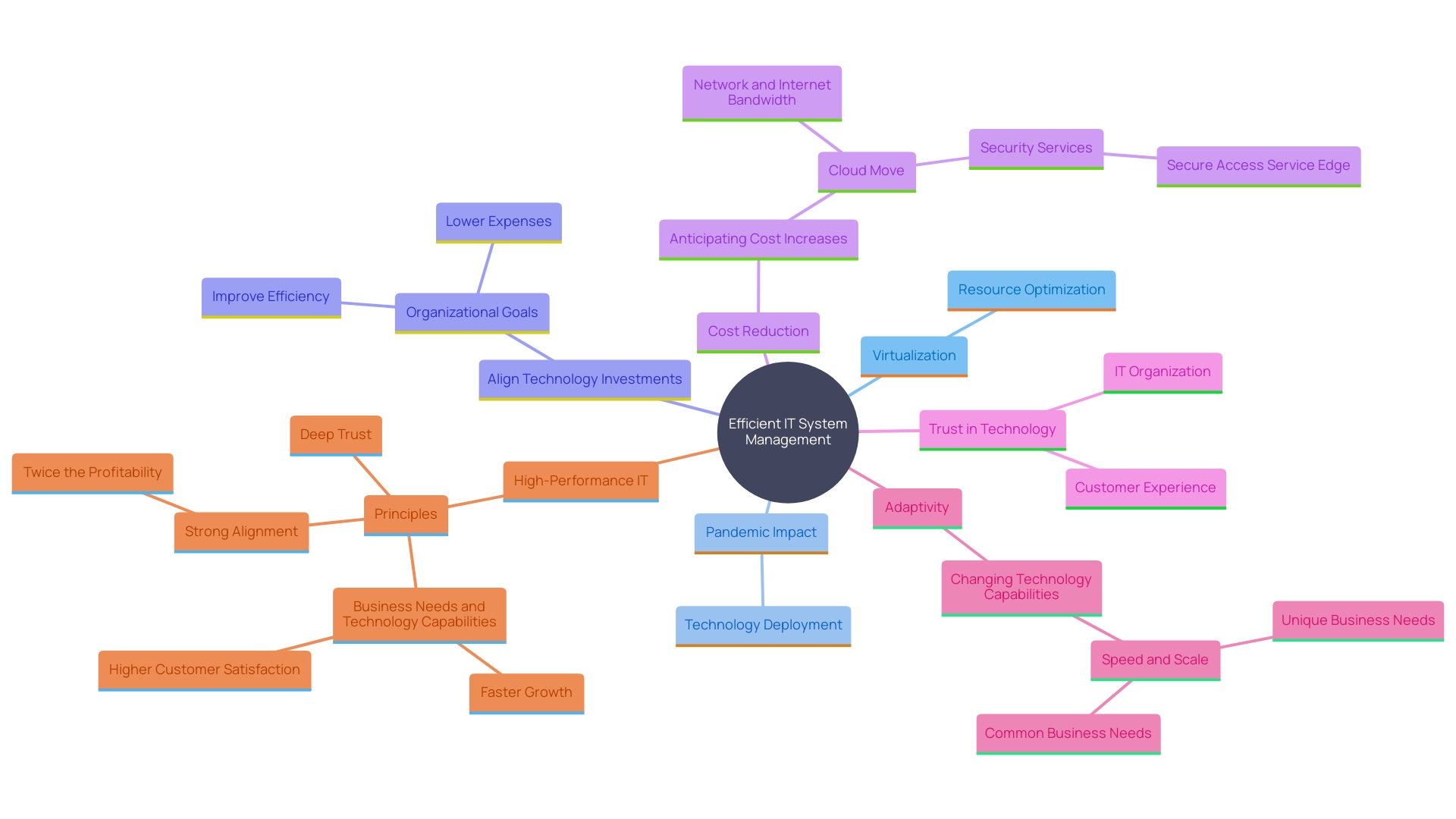
Measuring Success: Key Performance Indicators (KPIs) for IT Infrastructure Management
'Establishing clear Key Performance Indicators (KPIs) is pivotal for gauging the effectiveness of IT management strategies.'. Key metrics, including system uptime, response times, and user satisfaction, offer critical insights into operational performance. According to a recent IDC survey, achieving strategic business outcomes such as digital transformation and increased productivity is highly valued but challenging. Regular analysis of these KPIs facilitates data-driven decisions, ensuring continuous enhancement of IT infrastructure practices. This approach is echoed by Digitate's emphasis on AI-powered insights, which transform complex data into actionable recommendations, empowering organizations to make informed decisions and drive continuous improvement.
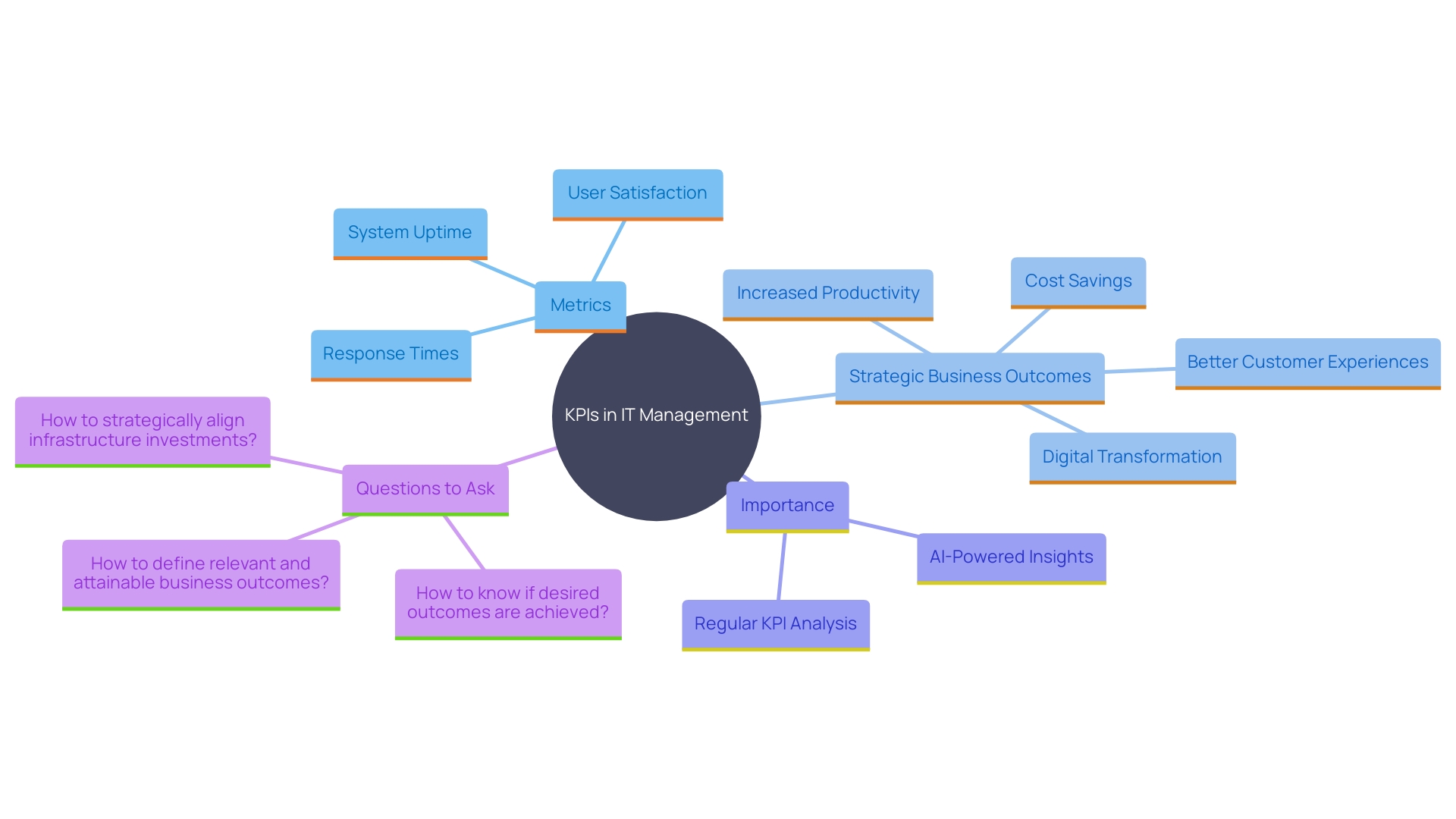
Conclusion
A well-structured IT infrastructure is fundamental to achieving operational excellence in today's business environment. The integration of key components—hardware, software, networks, and data storage solutions—ensures optimal performance and reliability. Organizations like Extreme Networks exemplify the benefits of innovative solutions that enhance customer experiences while reducing risks and improving efficiency.
Regular assessments of IT infrastructure, as demonstrated by the ADRZ hospital, reveal the necessity of scalability and reliability to support increasing demands without downtime.
Proactive monitoring and maintenance play a crucial role in managing IT infrastructure effectively. Continuous monitoring tools allow organizations to detect potential issues before they escalate, ensuring smoother operations and minimizing disruptions. This shift towards real-time insights enhances overall system performance and enables better resource allocation.
Furthermore, cybersecurity remains a top priority, with comprehensive strategies that include regular patch management and employee training to mitigate risks, as highlighted by the Guthrie Clinic's multifaceted approach.
Additionally, the importance of regular backups and disaster recovery planning cannot be overstated. A robust backup strategy, combined with a well-defined recovery plan, ensures that organizations can swiftly restore operations in the event of data loss or system failure. Cost reduction and resource optimization through strategies like virtualization are essential for maintaining a competitive edge, particularly in rapidly evolving technological landscapes.
Establishing clear Key Performance Indicators (KPIs) is vital for measuring the success of IT infrastructure management. Metrics such as system uptime and user satisfaction provide valuable insights that drive continuous improvement. By aligning technological capabilities with business needs, organizations can foster resilience and innovation, ultimately paving the way for sustained growth and success in an increasingly complex digital landscape.




